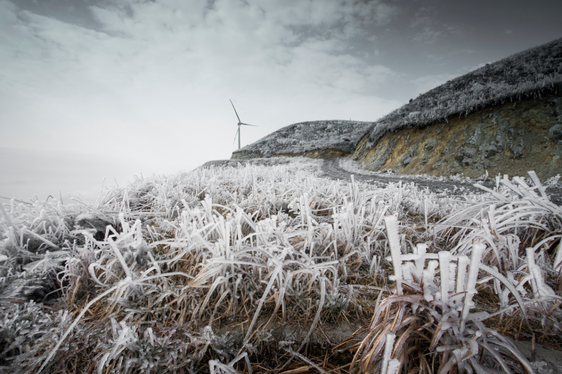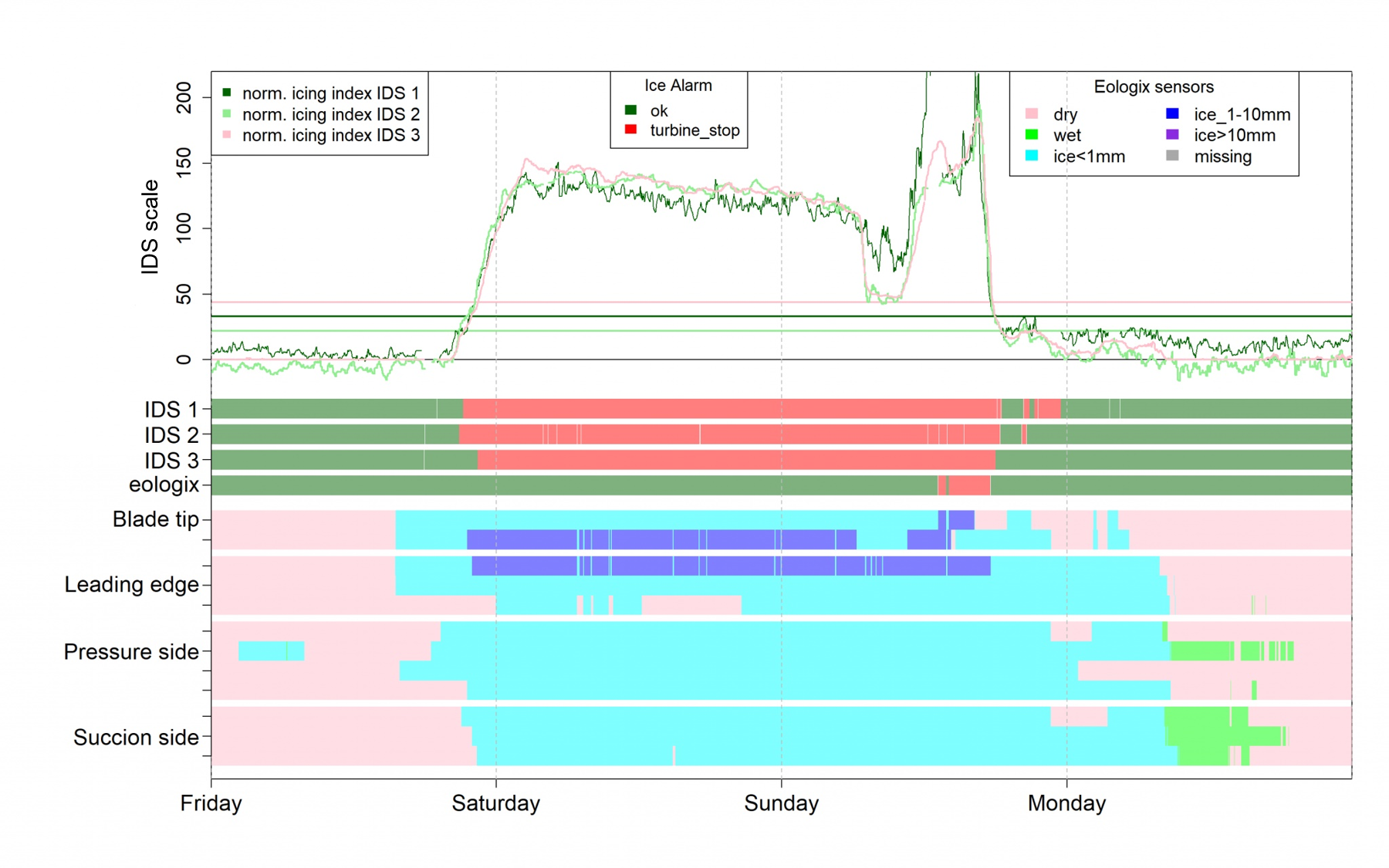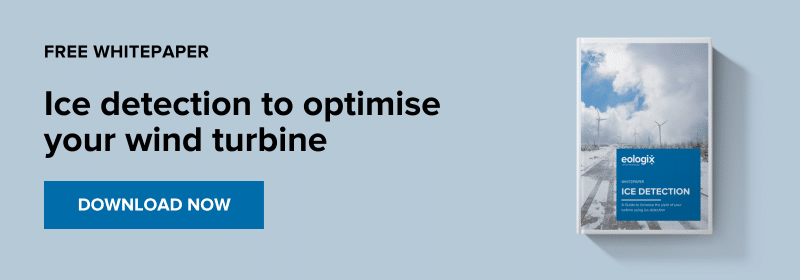TECHNOLOGY | 7 MIN TO READ
Comparison of 4 blade-based ice detection systems
Whitepaper: Optimise your wind turbine by using ice detection

Cost efficiency, high yields and turbine safety are the most important factors in the operation of wind turbines. Ice detection systems provide support to ensure efficient operation of wind turbines even in the windiest winter months.
As part of a project (Meteotest (2021), Comparison of four detection systems of rotor icing installed on the same turbine, VGB Research Foundation, Project 401), a comprehensive field test was conducted from 2016-2020 in Stor-Rotliden, Sweden. The aim was to install all four established blade-based ice detection systems (IDS) from Polytech (former fos4x), Wölfel, Weidmüller and eologix on the same Vestas V-90 and comparing them over many icing events (none of the four IDS controls the WT during the field test).
Efficient operation of wind turbines under icing conditions requires accurate detection of icing, both in terms of timing and severity. The four different IDS detect rotor icing from the inside or outside of the rotor blades:
- The IDS from Polytech (former fos4X), Wölfel and Weidmüller detect rotor icing based on changes in the frequency spectrum of the blade vibrations – these are also referred to vibration-based ice detection systems (VBS)
- The eologix system detects rotor icing based on the electrical impedance directly on the rotor blade surface
Overview of the compared ice detection systems
eologix – www.eologix.com
eologix offers (retrofittable) sensor systems for early and exact ice detection based on the electrical impedance directly on the rotor blade surface. The sensors are wireless, flexible, smart and energy-self-sufficient and installed directly on the surface of rotor blades.
Polytech (ehemals fos4x) – www.polytech.com
The system measures and learns the natural frequencies of the rotor blades under various operating conditions. As soon as ice masses form on the blades, the vibration behavior of the rotor blades changes. Measuring accuracy of less than 9 mm or less than 10 kg per blade.
Weidmüller – www.weidmueller.de
BLADEcontrol® measures the degree of icing directly on the rotor blades and is based on a simple physical principle: The ice accumulation changes the natural vibration behavior of the rotor blade due to its additional weight, which reduces the vibration frequency.
Wölfel – www.woelfel.de
IDD.Blade measures the vibration behavior with sensors inside the rotor blades. If the mass of a rotor blade changes due to ice accumulation, the vibration behavior also changes.
Read more about the differences between rotor blade-based ice detection systems in our Whitepaper Ice Detection.
A detailed comparison of four blade-based IDS
After four winter seasons a data set of approximately 5700 operating hours (simultaneous operation of all four systems) of the wind turbines was collected, with approximately 2500 hours of icing (only rime ice). Several cameras have been used as a reference. This unique dataset allows a detailed comparison of the four blade-based IDS.
The analysis of the icing events showed that there is a consistensy between all four IDS and the camera images in terms of the timing of the icing events. The number of icing events for the three vibration-based IDS is very similar. However, differences in the total duration of turbine stops could be observed due to different sensitivity of the systems. Concerning the eologix system, there were significantly fewer and shorter downtimes.
The four blade-based ice detection systems compared using the example of an ice event from this study
The following figure shows an example of an ice event from this study. As can be seen in the figure, the eologix sensor system is the first to detect ice (turquoise – showing the eologix sensors), whereas the vibration-based ice detection systems (IDS1, IDS2 and IDS3) detect ice much later (visible in red).
The eologix system is the last system to shut down the plant, as it can distinguish between safety-relevant icing and non-safety-relevant icing (shown in red in the eologix line above| compared to IDS1, IDS2 and IDS3).

Example of an ice event (VGB research project 401; Abstract presented at Winterwind 2021) – (Source: Comparison of four blade-based ice detection systems installed on the same turbine, Paul Froidevaux, Meteotest AG, Winterwind 2021, April 20, 2021)
eologix compared to other ice detection systems
“[…] most sensitive ice detection status from all four systems.”
(Quote about the eologix system (Meteotest (2021), Comparison of four detection systems of rotor icing installed on the same turbine, VGB Research Foundation, project 401)
Regarding the eologix ice detection system the following points were summarized as results:
- eologix is the first system to detect icing on the rotor blade,
- the eologix system requires the shortest downtimes (if the wind turbine stops according to the system certifications),
- the eologix system stopped the wind turbine 2.5 times shorter than the three VBS,
- eologix was the only system with 100% availability of ice detection during production hours.
It was further noted, unlike the eologix system, the three vibration-based systems could not detect icing at low wind speeds or in the case of standstill.







